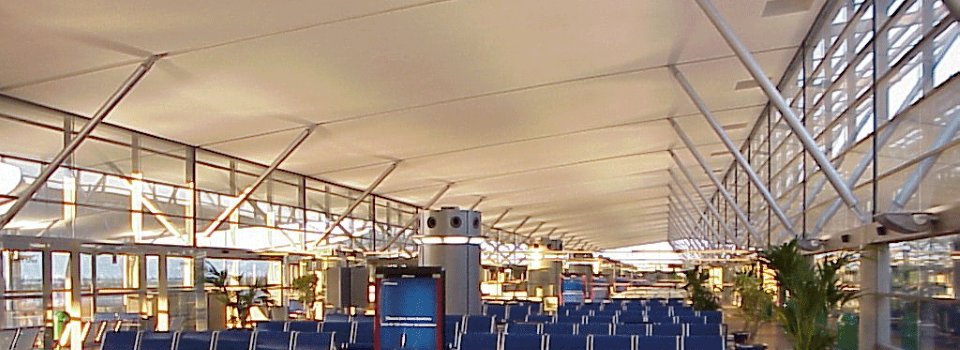
In passive fire protection, a ceiling is defined as lining plus any supporting framework, including hangers, fixings and any insulation material. Generally ceilings are not considered a structural element, but a finished surface concealing the underside of the roof structure or the floor of a storey above.
The ceiling may be attached directly to the structural member, suspended from it or be self-supporting. The scope of a ceiling in fire protection is contributing to the horizontal compartmentation of a building or to a specific compartment.
The horizontal compartmentation is extremely important because avoid the spread of fire and hot gasses from a floor to another, giving time to the people present in the upper part of a building (which is the most dangerous in case of fire) to escape in a safe way.
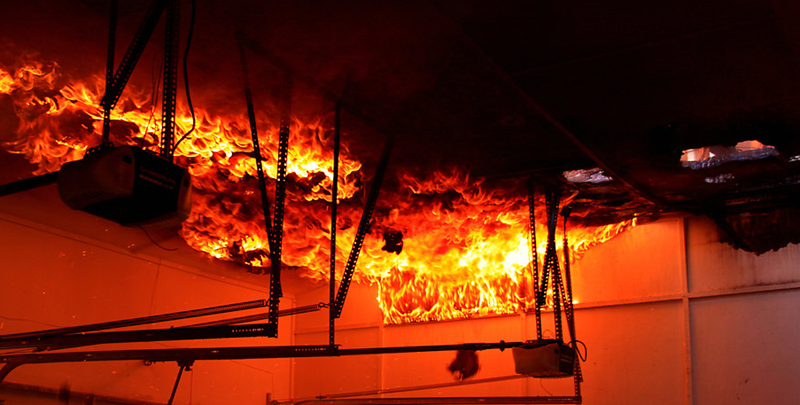
How to choose the best fire protective ceiling for my project?
There are various types of ceiling, with different scope and intended uses, which can increase the safety of a building. The right choice is based, first of all, on the fire rating of the compartment and on the scope of the ceiling (contribution to fire resistance to existing element or fire rated ceiling), but also on acoustic and aesthetical aspects.
As a general rule, the ceiling must be installed as described in the fire test report or in the classification reports, including hanging and fixing systems. Moreover, the total area occupied by fixtures and fittings relative to the area of the ceiling lining cannot be increased and the maximum tested opening in the lining is not exceeded. In other words, if a ceiling is tested with one luminaire cover every 10 square meters, the same percentage must be used in the application on site. If is tested without, no luminaire cover can be used. The same concept is valid for any other fittings or specific penetrations.
Types of passive fire protection ceilings
Ceiling can be continuous lining or tile and grid systems (600 x 600 mm or 600 x 1200 mm) and can be a simple board or a combination of different products (such as a rigid board and mineral wool, etc.).
Essentially, there are four basic types of ceiling used as a part of fire protection strategy:
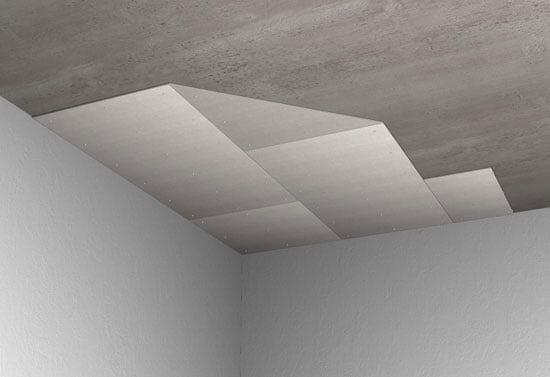
Incombustible or low combustible ceilings
The main purpose of these ceilings is to avoid flame spreading on the roof and to limit the contribution to the fire load in the compartment. They are classified according to the local “fire reaction” standards. Reaction to fire relates to combustibility and ignitability of a material i.e. its contribution to fire growth.
From this point of view, the best classification is: “no combustible” (such as A1 according to the Euroclass, or similar). The EU classification system for building products according to EN 13501-1 calls for 7 Euroclass classifications (A1, A2 and B through F), based on various test and a so-called reference scenario.
These products give no contribution to the passive fire protection, however can be used as part of a “fire prevention” strategy.
Ceiling classified only according to the fire reaction cannot be used for increasing the fire resistance of compartment elements. The ceilings used for fire protection, can be incombustible, to combine fire protection and fire prevention.
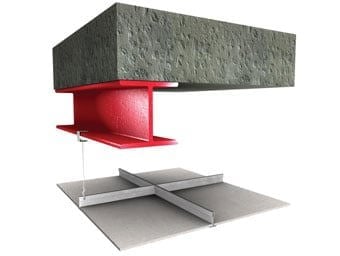
Suspended ceilings, which give a contribution to the fire resistance of load bearing elements (protective systems)
These ceilings, called “horizontal protective membrane”, have the ability to contribute to the fire resistance of horizontal structural building members up to 1 hour, 2 hours or more (R 60 – R 120). More specifically, the fire resistance of the loadbearing element protected by the ceiling, can be classified based on the temperature within the cavity or on the element itself (in Europe the test standard is EN 13381-1), the classification is done according to EN 13501-2.
These types of ceilings are used mainly for protection of steel beams supporting a loadbearing concrete floor slab or of concrete slabs or, in some cases, also of timber floors.
The advantage of these ceilings is that they are protective materials, so can be used for protection of different loadbearing elements, with a wide direct field of application. The contribution to the fire resistance is valid only if the system is installed exactly as in the fire tests, including hanging (suspension system), junctions between membrane and walls/ edge panels, joints and jointing materials.
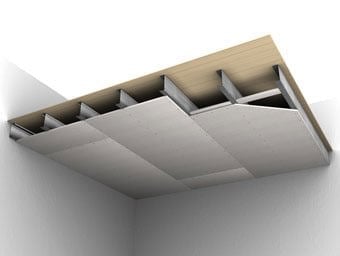
Ceiling as component of a fire rated roof constructions, with or without cavities
These ceilings are considered as part of the whole system (roof/slabs + ceiling) and the fire classification is valid only for the entire load-bearing construction (identical or similar to the one tested). So the rating is achieved by the entire system, which is both the structure above as well as the suspension or fixing mechanism and, finally the lowest membrane or ceiling.
In this case the ceiling is defined as “lining plus any supporting framework, including hangers, fixings and any insulation material”.
The ceiling may be attached directly to the structural member or suspended from it or be self-supporting. If it’s suspended, extremely important is the height of the cavity (the space between the upper surface of the ceiling and the underside of any floor, roof or its supporting construction) which must be at least high as the one tested: it’s possible to increase it but not decrease it.
The complete roofing system, including the ceiling, is tested for integrity, insulation and loadbearing capacity (REI) and with respect to the structural building member, the maximum moments and shear forces shall not be greater than those tested.
No combustible or insulating material can be added to the cavity, unless the same amount (in term of fire load) was included in the fire test.
In Europe these roof or floor systems are tested according to EN 1365-2.
Typically, such systems achieve up to 120 minutes fire resistance (REI 120) or up to 180 minutes (REI 180) for concrete slabs.
IMPORTANT: the contribution to the fire resistance is valid only if the system is installed exactly as in the fire tests, including hanging (suspension system), junctions between membrane and walls/ edge panels, joints and jointing materials.
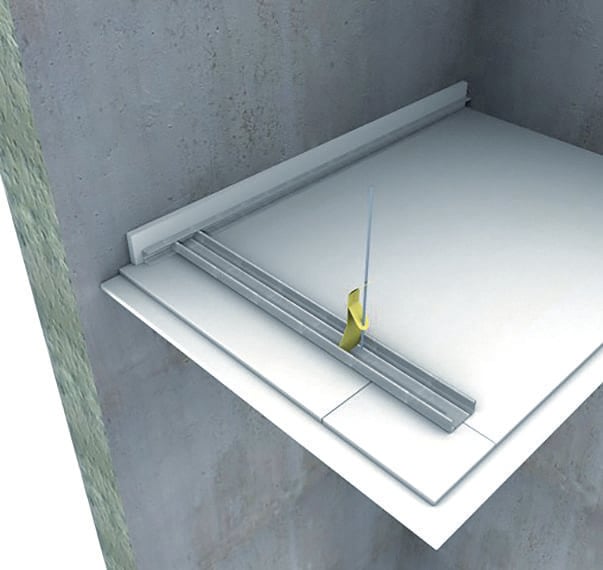
Independent ceiling (ceiling membrane)
The ceiling is defined as a “non-loadbearing element of a building construction designed to provide horizontal fire separation”. The ceiling has a stand-alone fire-resistance rating and is used to provide protection from fire attack from below and/or above. In other words, these ceilings possess intrinsic fire resistance, independent of any building element above them.
The ceilings can be either suspended by hangers or fixed directly to a supporting frame/ construction or be self-supporting ceilings.
In Europe these roof or floor systems are tested according to EN 1365-2, and the classification is done according to EN 13501-2.
The systems (ceiling + suspending /fixing components) are required to provide an integrity and insulation performance, independent from the supporting floor construction (generally EI 30 or EI 120). Also important is the direction of the fire protection, which can be from above a → b, from below a ← b or from both sides a ↔ b.
These ceiling systems allow for the protection to or from services contained within the ceiling void. More specifically, the ceiling should protect services in the ceiling void from fire in the room or corridor; equally, fire resistance may be needed to safeguard the corridor from burning electrical cables and other services located behind the suspended ceiling.
The fire resistance classification is valid only if the system is installed exactly as in the fire tests, including hanging (suspension system), junctions between membrane and walls / edge panels, joints and jointing materials.
Ceilings of classification EI cannot be considered the same as load-bearing ceilings of classification REI, despite their fire and heat stopping capabilities. Ceilings of classification EI are tested according to EN 1364-2, while ceilings of classification REI are tested under full load according to 1365-2 and that way they also protect the load-bearing capability of structural elemnts of the building.


